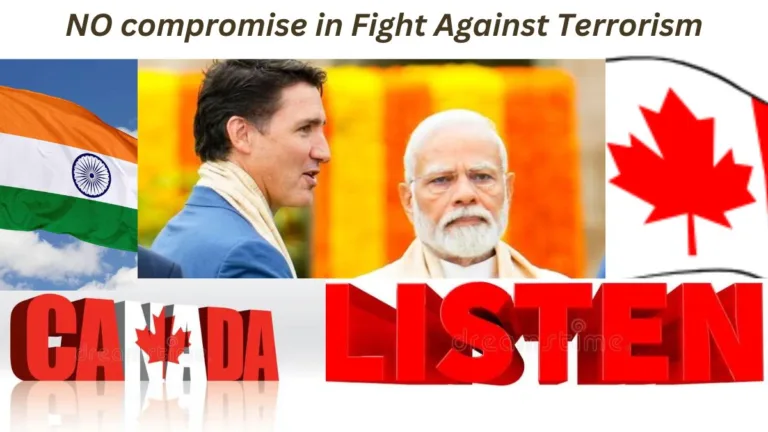“Surprise! Wealthy World Leaders Skip UN Summit, But You Won’t Believe Pakistan’s Prime Minister Is So Eager To visit New York”
The 76th session of the United Nations General Assembly in New York has gained attention not only for its critical global agenda but also for the conspicuous absence of leaders from some of the world’s wealthiest nations. Notable no-shows on this international stage include Chinese President Xi Jinping, Russian President Vladimir Putin, French President Emmanuel Macron, Indian Prime Minister Narendra Modi, and British Prime Minister Rishi Sunak. Their nonattendance has sparked curiosity and, in some quarters, raised questions about the role and influence of “caretaker” Prime Ministers on the global diplomatic scene.
Amidst the absence of these heavyweight leaders, one name stands out – “caretaker” Prime Minister Anwaar-ul-Haq Kakar, representing a nation grappling with severe economic challenges. The decision of Kakar Sahib to attend the General Assembly has left many wondering about the objectives he seeks to accomplish on this grand diplomatic stage. While some may ponder the significance of his presence, it’s essential to consider the unique circumstances surrounding caretaker prime ministers in the global arena.
The term “caretaker” itself conveys a temporary nature, a brief stint in leadership brought about for a specific purpose. In the case of Kakar Sahib, he has assumed this role to oversee an interim arrangement aimed at facilitating upcoming elections in his country. This interim position, designed to ensure a smooth transition of power, often lasts only a few months. Caretaker prime ministers are not elected by popular vote and lack the mandate that typically accompanies elected heads of state.

It is against this backdrop that questions emerge regarding the credibility and influence of caretaker prime ministers in international forums like the UN General Assembly. Observers and critics argue that due to their limited tenure and absence of a popular mandate, caretaker prime ministers may find it challenging to garner significant attention or sway global policy decisions in such gatherings.
While Kakar Sahib’s presence at the UN General Assembly may be symbolic of his nation’s commitment to participating in global affairs, the limitations inherent to caretaker prime ministers should not be underestimated. The absence of many world leaders, including those from economic powerhouses, underscores the fact that the primary decision-makers and key players in international diplomacy are often those with the backing of their nations’ electorates and the stability of a full-term mandate.

As the General Assembly proceeds with its discussions on critical global issues, including climate change, conflict resolution, and public health crises, the world will be watching closely to see what impact, if any, the presence of caretaker Prime Minister Kakar Sahib may have. Regardless of the outcome, one thing is clear: the unique position of caretaker prime ministers remains a subject of intrigue and debate on the global stage.
Very Important Points about UN General Assembly
Q1: Where is the UN General Assembly 2023 taking place?
A1: The UN General Assembly 2023 is taking place in New York.
Q2: What is the major summit of the United Nations in 2023?
A2: The major summit of the United Nations in 2023 is the 2023 SDG Summit, scheduled for 18-19 September 2023 in New York. It will focus on accelerating progress towards the Sustainable Development Goals.
Q3: How long is the UN General Assembly 2023?
A3: The 78th session of the UN General Assembly (UNGA 78) will begin on 5 September 2023, with the high-level General Debate scheduled from 19 September 2023 to 29 September.
Q4: What is the UN summit in September 2023?
A4: The UN summit in September 2023 is the SDG Summit, which will be the centerpiece of the High-level Week of the General Assembly. It aims to address global crises and reinvigorate commitment to the 2030 Agenda.
Q5: Which country is hosting the 2023 UN Climate Change Conference (UNFCCC COP 28)?
A5: The 2023 UN Climate Change Conference (UNFCCC COP 28) will be hosted in Dubai, United Arab Emirates (UAE), from 30 November to 12 December 2023.
Q6: How many member states are there in the UN in 2023?
A6: As of 15 September 2023, there are 193 member states in the United Nations (UN), each represented in the United Nations General Assembly.
Q7: How frequently does the UN General Assembly meet in a year?
A7: The UN General Assembly meets annually in regular session, primarily from September to December, and then resumes in January to address any outstanding agenda items.
Q8: When was the last UN General Assembly held?
A8: The last UN General Assembly, the 77th Session (UNGA 77), commenced on 13 September 2022, with the high-level debate occurring from 20 September to 26 September.
Q9: What are the UN high-level events for 2023?
A9: In 2023, the UN will host high-level events to review the implementation of the 2030 Agenda and its 17 Sustainable Development Goals (SDGs) on 18-19 September at UN Headquarters in New York.
Q10: Who is hosting the UN Ocean Conference in 2023?
A10: The UN Ocean Conference in 2023 will be co-hosted by the Governments of Tajikistan and the Netherlands. It represents a significant opportunity to mobilize Member States and stakeholders to address global water-related challenges.
Q11: Who are the permanent members of the UN in 2023?
A11: The five permanent members of the United Nations, often referred to as the P5, are China, France, Russia, the United Kingdom, and the United States.
Q12: Which country was the last to join the UN?
A12: The most recent country to join the United Nations was South Sudan in 2011.
Q13: Who are the five permanent members of the UN General Assembly?
A13: The five permanent members of the UN General Assembly are China, France, the Russian Federation, the United Kingdom, and the United States. In addition to these permanent members, there are ten non-permanent members.
Q14: Who are the ten non-permanent members of the UN General Assembly?
A14: The ten non-permanent members of the UN General Assembly may change, but as of 2023, they include Albania, Brazil, Ecuador, Gabon, Ghana, Japan, Malta, Mozambique, Switzerland, and the United Arab Emirates.
Q15: Why are there five permanent members of the UN?
A15: The five permanent members of the UN Security Council were granted their status based on their significance in the aftermath of World War II. They hold special responsibilities for maintaining international peace and security.
Q16: Which countries are not members of the UN?
A16: Two countries that are not members of the United Nations are Palestine and the Holy See (Vatican City).
Q17: What are some countries not recognized by the UN?
A17: Some countries not recognized by the United Nations include Kosovo, South Ossetia & Abkhazia, Nagorno-Karabakh, Transnistria or the Pridnestrovian Moldavian Republic, New Russia or the Union of People’s Republics, The Turkish Republic of Northern Cyprus, The Sahrawi Arab Democratic Republic, and Taiwan or the Republic of China.
To know more about UNO please click here
You May Like :






